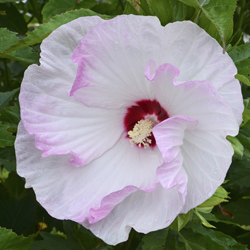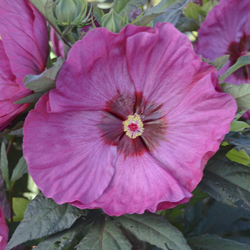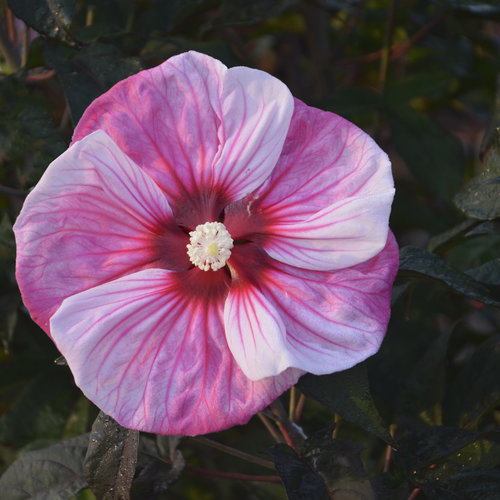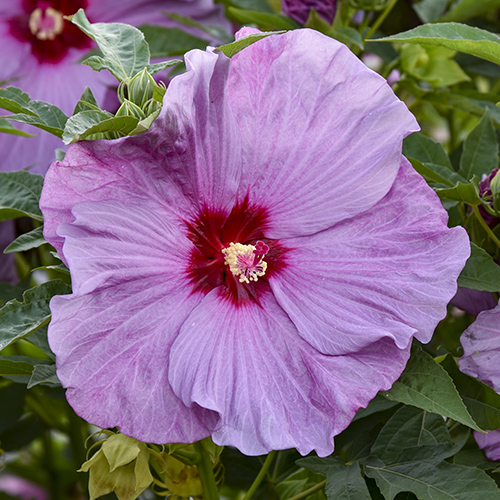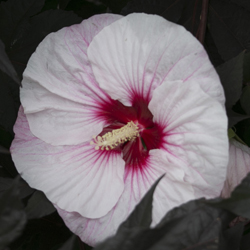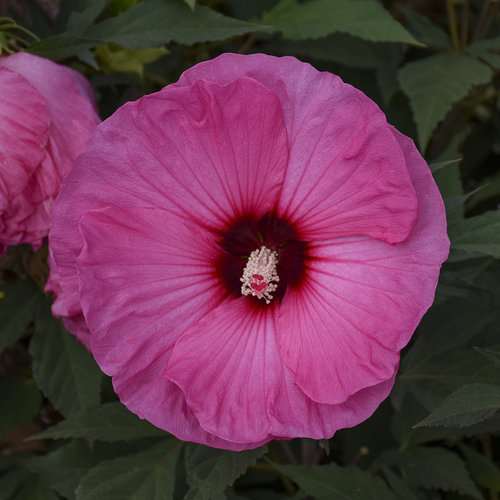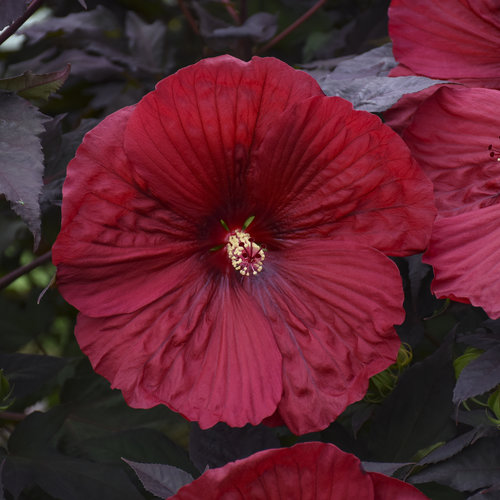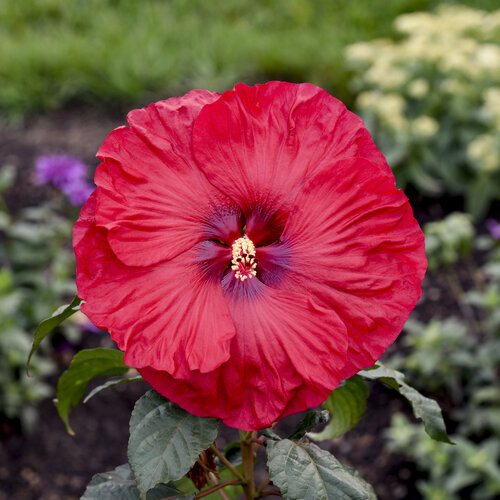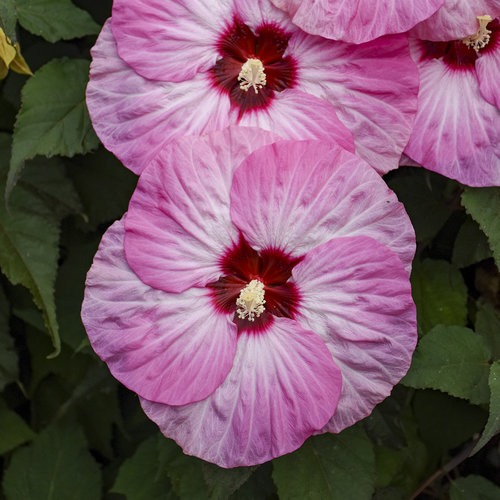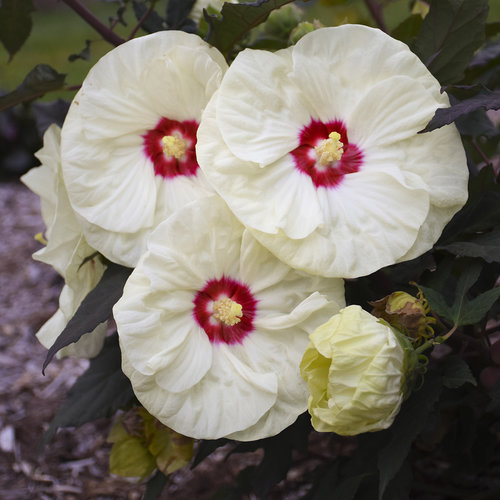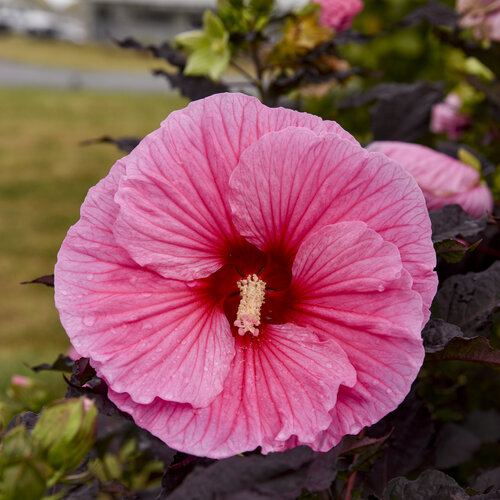Rose Mallow Guide - How to Grow “Dinner Plate” Hibiscus
Learn all about how to select and grow fabulous rose mallow, also known as perennial Hibiscus or dinner plate hibiscus.
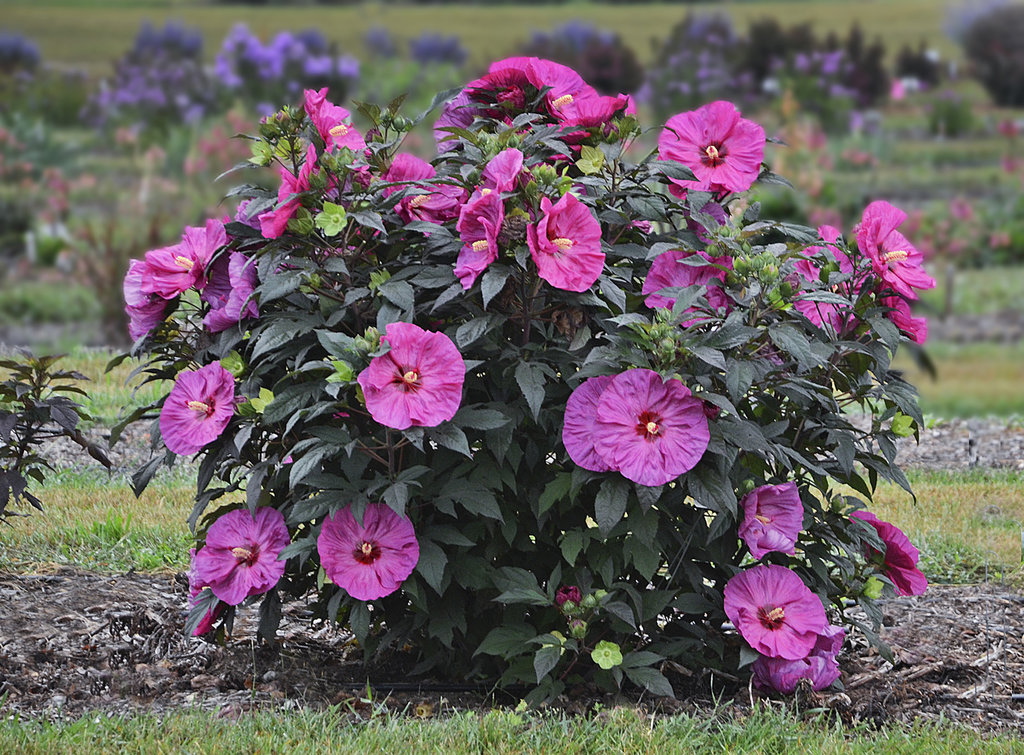 Buy rose mallow plants - Order online and have them shipped right to your door
Buy rose mallow plants - Order online and have them shipped right to your door
Even if you’ve never gardened before, you’ve probably heard the name Hibiscus. It’s the iconic flower of the tropics with its image splashed across Hawaiian print shirts and beach blankets everywhere.
What many people don’t realize is that the name Hibiscus is used to describe many different kinds of flowers, some of which thrive in heat of the south and others which are hardy all the way north to Minnesota.
Some types are grown as houseplants, while others are hardy perennials or shrubs. In this article, let’s look at perennial Hibiscus, commonly known as Rose Mallow.
Growing in zone 4 (think Minnesota, Wisconsin and the like) to zone 9 (tropical climates like Florida), rose mallow bears some of the largest flowers of any perennials. You may have heard them called “dinner plate Hibiscus”, a name coined for its huge 7-9 inch wide, circular blooms.
It’s hard to believe something with such a tropical look would be hardy in climates that see snow for three months in a row. Actually, a number of the rose mallow varieties you’ll find at your local retailer were born and bred in zone 5b Michigan. Despite their cold weather origin, they deliver outstanding performance in trials in Texas and California too. They are truly versatile perennials.
There are a few things you’ll want to know about rose mallow before you head out to choose one from your local retailer. Let’s look at selection criteria and what you’ll need to help them thrive in your garden.
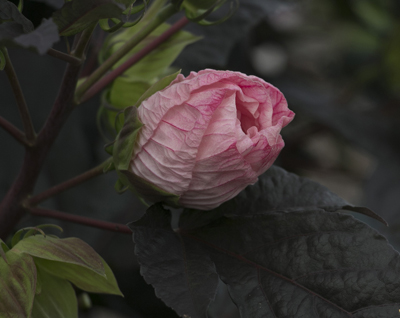
What to look for when you are shopping
One distinguishing trait of rose mallow is what is called determinate v. indeterminate bloom. Determinate describes a plant that grows to its full height before setting flowers just at the tips of its stems. When determinate varieties bloom, you’ll see flowers on the top of the plant like frosting on a cupcake. Since there are fewer flower buds overall, the bloom time will be shorter.
Indeterminate blooming varieties of rose mallow, like all of the Summerific® Hibiscus from Proven Winners, produce flowers all up and down the stems, not just at the top. As a result, you’ll have flowers all over the plant for about three times longer than determinate varieties since they bear approximately triple the number of buds.
When you’re shopping for rose mallow, read the plant labels and look for the word indeterminate or some other language that indicates the plant will bloom for many months. You can also check the stems to see where the buds are forming, though this is not always a reliable way to know if a plant is determinate or indeterminate, depending on the time of year you are shopping and how the plant was grown.
Meet the Summerific® Hibiscus collection from Proven Winners!
Rose Mallow Care
Now before you buy your first rose mallow, let’s look at what you’ll need to help this plant grow.
Water, water and more water
The most important thing rose mallow needs to survive is water, and lots of it. Some of the native species can actually grow IN water. Plant yours in a spot that the hose or sprinklers will reach on a regular basis. Whether your soil consists of clay, sand or something in between, do not let this plant wilt and dry out. You’ll know it is not getting enough water if it becomes scraggly looking and drops its lower leaves and flower buds.
Related: Rain Garden Plants
Give me some elbow room
Rose mallow is a large perennial that takes up a lot of room. Even varieties that are considered “dwarf” grow at least three feet tall and wide, with standard-sized rose mallow growing 4-6 feet tall and wide. Find a place in your landscape where it will not be crowded by other plants, because it will quickly outcompete your other perennials for space.
Bring on the sun
The best place to plant a rose mallow is somewhere the sun shines all day long. It loves hot, humid, sunny weather and shows its best colors in full sun. You’ll have more flowers too. If your only option is a spot in part shade, rose mallow will grow there but fewer flowers will be produced and varieties with purple foliage will appear more green.
Full sun brings out the best colors and most blooms on rose mallow.
Give me some attention in spring
When all of the other perennials in your garden start to show signs of life in early spring, don’t be worried that your rose mallow is still fast asleep. It is always one of the last plants to show new growth in spring. Once it starts growing, it will grow about an inch a day and start to bloom in midsummer.
Before you see the new foliage appear in spring, take a strong pair of loppers or pruners to cut down all of the woody stems to about 6 inches tall. The new growth will appear from the base of the plant, not those brown stems, so it’s a good idea to remove them.
When the new growth appears, you’ll know the plant has woken up and is ready for some breakfast. Apply a balanced slow-release plant food to the surrounding soil which will continue to feed it for several weeks. Then give it some water-soluble plant food in early summer just as its flower buds are beginning to form to help the plant have energy to produce lots of flowers.
Equipped with this knowledge, you’ll be able to grow prize-winning rose mallow. We promise it will be the highlight of your garden every year from midsummer into fall. Save the label when you plant it because your friends and neighbors will surely be asking you for ID!
Rose Mallow FAQs
What is the difference between Rose of Sharon and rose mallow?
Rose of Sharon and rose mallow both produce beautiful, tropical-looking flowers, but there are some key differences:
- Flower size: Rose mallow has large blooms, often double the size of Rose of Sharon's.
- Plant type: Rose mallow is a hardy perennial, while Rose of Sharon is a woody shrub.
- Water needs: Rose mallow likes lots of consistent water, while Rose of Sharon isn't as thirsty.
Learn more about the different types of Hibiscus.
Does rose mallow spread?
In the right growing conditions, rose mallow will slowly spread by producing new shoots from its base via underground rhizomes. But it isn't aggressive and is easy to contain. Every few years, simply divide the plant or remove any unwanted new shoots.
Do deer eat rose mallow?
Rutgers gives rose mallow a C-rating, which means it is occasionally severely damaged. Deer may nibble on new shoots but once established, deer browsing is less of a concern.
Is my rose mallow dead?
Don't worry, it is normal for rose mallow to be slow to wake up and start growing. It is always one of the last plants to come up in spring, even in warm climates. But once it does wake up, it will grow about an inch a day.
Want to learn more?
5 Tips for Growing Summerific Hibiscus



